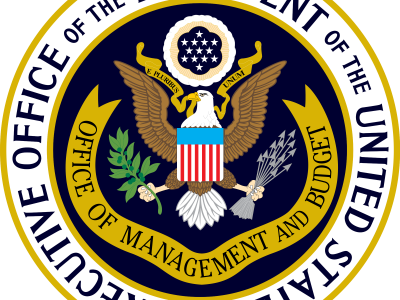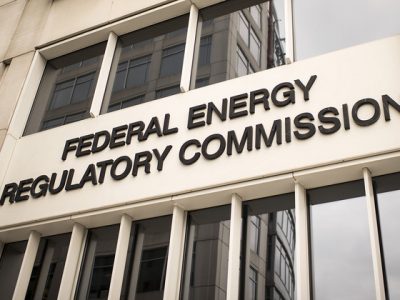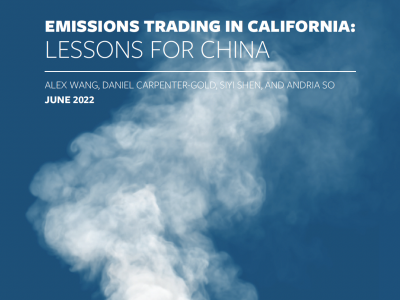The Supreme Court Curbs Climate Action
The ruling in West Virginia v. EPA was about as good as we could expect given the makeup of the Court.
Today, the Supreme Court decided its most important environmental case since 2007. We didn't dodge the bullet. It's more than a flesh wound but it didn't hit any vital organs . Chief Justice Roberts's majority opinion leaves EPA other options to reduce carbon emissions from coal-fired power plants. It also gives a fairly narrow reading to a legal doctrine that could limit the fallout from the case in terms of other regulatory powers. Here is the Court's reasoning ...
CONTINUE READINGUnquantified Benefits
How can the government account for benefits that it can’t measure?
Like it or not, quantitative cost-benefit analysis has been a key part of the regulatory process for forty years and seem likely to stay that way. Yet even economists admit that they don’t (yet) know how to put numbers on the value of some important regulatory benefits. But how can those qualitative assessments be combined with a quantitative analysis? One possible answer is that how to combine those factors is basically a value judgment that the President and h...
CONTINUE READINGWill Russia “Win” the Climate Crisis?
It’s complicated. But probably not.
The conventional view is that climate change is going to be a great thing for Russia. The reason is pretty obvious: a lot of Russia is cold and icy right now; warming will be an improvement. That’s likely to be true in some ways, but warming may be a mixed blessing. Whether what is good for Russia will turn out to be good for the Russian people is another question. The conventional view is spelled out in a NY Times Magazine article. The article’s theme is in its...
CONTINUE READINGWill Rights of Nature Save The World?
Examining whether granting legal rights to nature could make a difference in how courts understand environmental law
A number of environmental advocates have been pushing a new strategy for environmental protection – seeking to pursue legal rights for elements of nature (such as rivers, lakes, ecosystems, or species), sometimes in alliance with Native American tribes. This approach is not unique to the United States – rights of nature legal approaches have been used in New Zealand, Bolivia, and Ecuador. Will this approach produce better outcomes for environmental law? A rece...
CONTINUE READINGTwo FERC Cases and Why They Matter
Last week’s D.C. Circuit cases illustrate why environmental lawyers need to understand FERC.
The Federal Energy Regulatory Commission (FERC) has been called the most important environmental agency that no one has heard of. At the end of last week, the D.C. Circuit decided two undramatic FERC cases that illustrate FERC’s environmental significance. One involved a bailout to coal and nuclear plants, the other involved water quality. The first case, Turlock Irrigation District v. FERC, involved FERC’s role in approving licensing and relicensing of hydroele...
CONTINUE READINGGuest Contributors Jasmine Robinson and Jessica Vived: Proposed Extreme Heat and Air Quality Protections for Agricultural Workers Advance in California Legislature
AB 2243 resulted from a partnership between law students in UCLA Law's California Environmental Legislation and Policy Clinic, UCLA’s Food Law and Policy Clinic, and Assemblymember Eduardo Garcia
We are students in UCLA Law’s California Environmental Legislation and Policy Clinic, a course in which students work with legislative staff in the California State Legislature to advance environmental policy goals. In Fall 2021, working with staff for State Assemblymember Eduardo Garcia, we developed recommendations for stronger heat and air quality protections for agricultural workers. California’s agricultural workers underpin a $50 billion-dollar industry in ...
CONTINUE READINGEquity Weighting: A Brief Introduction
An unfamiliar concept for most that just might make cost-benefit analysis more progressive.
The logic of cost-benefit analysis (CBA) favors the rich over the poor. CBA is based on willingness to pay. In essence, that means voting with dollars, which comes with inherent inequality. There’s a possible fix to this problem, however. It’s called equity weighting. Equity weighting adjusts the monetary values used in CBA to take into account that a dollar to a poor person is worth much more than a dollar to a rich one. Equity weighting can make a big difference...
CONTINUE READINGSouth Korea and Climate Change
A small country, but a significant carbon emitter.
Little known fact: The ninth largest carbon emitter in the world is South Korea. What is South Korea doing to cut its emissions? That answer, in brief, is that it has adopted the right kinds of policies, but may need to up its level of ambition. Even so, it compares favorably with the national governments in places like the U.S. and Australia. Here’s some background on the country for those whose knowledge mostly derives from watching reruns of MASH. South Korea is ...
CONTINUE READINGEmissions Trading in California: Lessons for China
A New UCLA Report for Chinese Regulators and Researchers
We are pleased to announce the release of a new UCLA Law Emmett Institute of Climate Change & Environment report on Emissions Trading in California: Lessons for China. As many of you know, China launched trading for its national greenhouse gas (GHG) emissions trading system (ETS) in 2021. By volume of emissions, the Chinese system is the world’s largest ETS. It covers more than 2,000 firms in China’s electricity sector, accounting for about 4.5 GT of CO2 emission...
CONTINUE READINGClimate Policy in India
What’s Happening in the World’s Second Largest Country?
India is home to 1.39 billion people, just below China but growing faster. By some projections, it will have the second largest economy in the world by 2050. In terms of climate policy, however, it doesn’t get nearly as much attention as China. That’s understandable in terms of India's current carbon emissions, which are now only a quarter of China’s. But we need to be more forward-looking. Currently, India’s power system is heavily tilted toward coal generati...
CONTINUE READING












